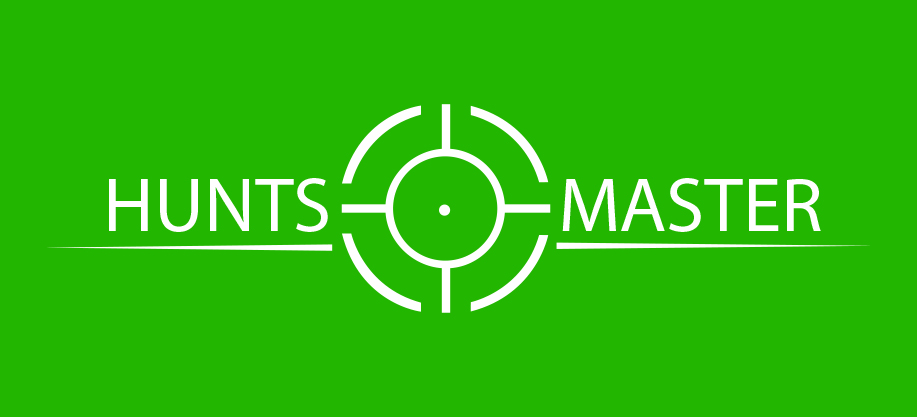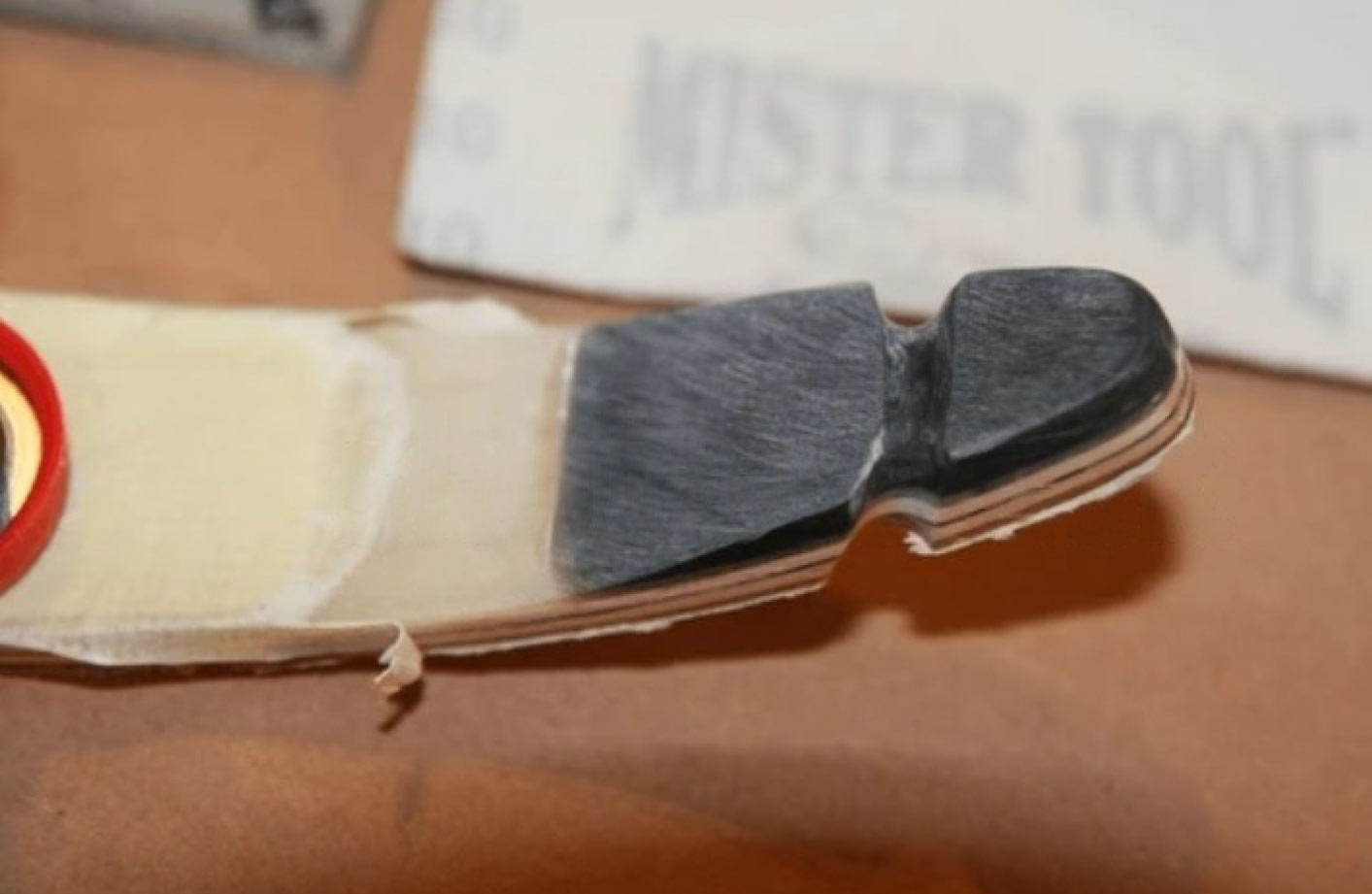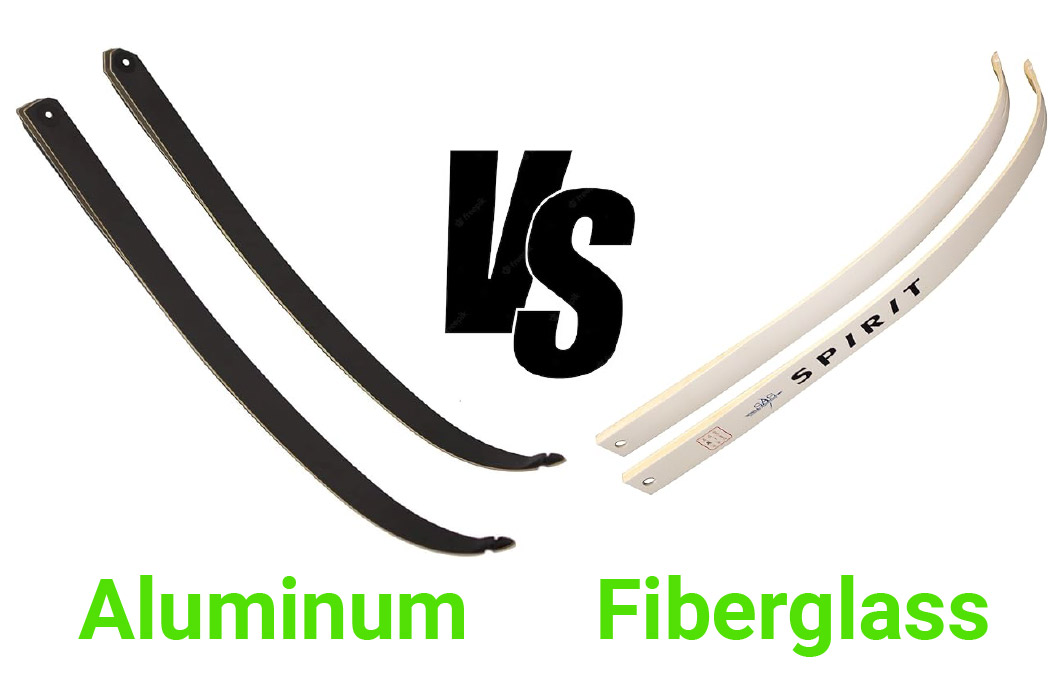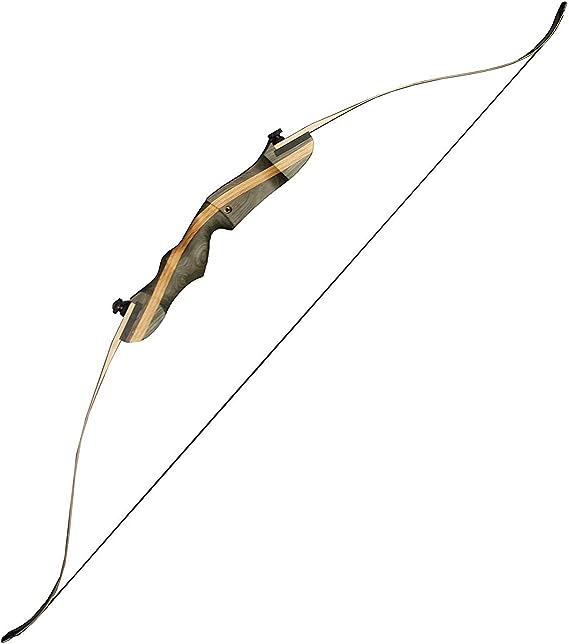Aiming a recurve bow without a sight is an art that requires practice, patience, and a keen sense of intuition.
This method of shooting, often referred to as instinctive archery, relies more on muscle memory and natural instincts than mechanical aids to align the arrow with the target.
We will guide you through the process of aiming a recurve bow without a sight, so you can improve your accuracy and connect with the roots of traditional archery.
Understanding Instinctive Archery
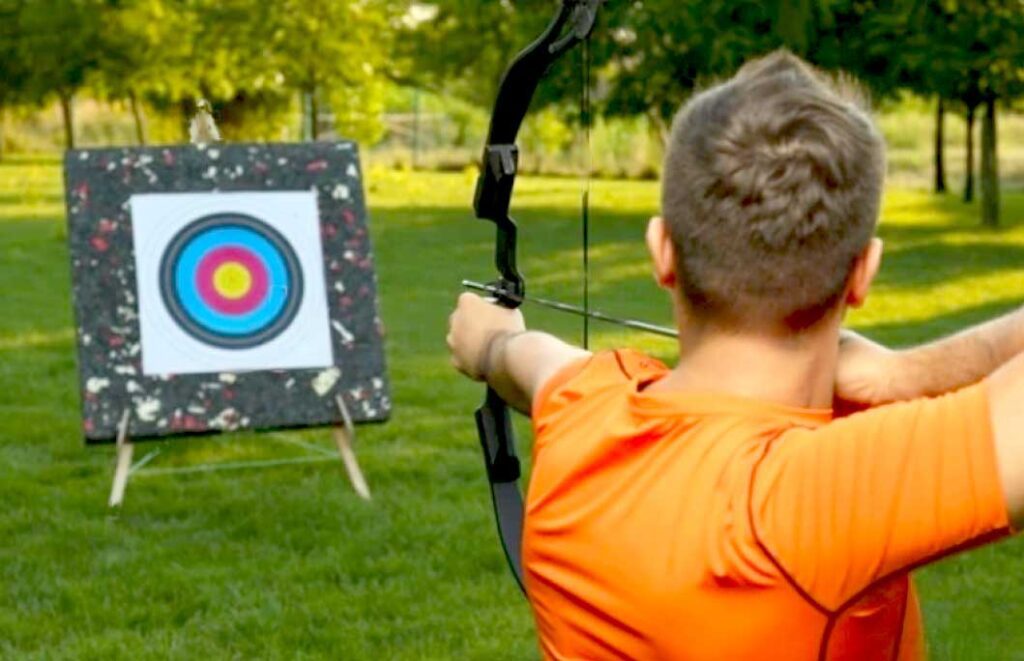
Instinctive archery is a style of shooting that relies on the archer’s natural instincts and muscle memory to aim and shoot accurately.
This method does not use a sight or any other aiming aids, making it a more traditional and challenging approach to archery.
Instinctive archers develop a strong connection with their bow and a deep understanding of their body’s movements, allowing them to shoot with precision even without the assistance of a sight.
Choosing The Right Equipment
To aim a recurve bow effectively without a sight, you need to have the appropriate equipment. This includes selecting the right bow size, draw weight, and arrows.
Consult an archery professional or coach to help you choose the best equipment for your skill level and physical abilities.
Proper Stance and Posture
A stable and consistent stance is crucial for accurate aiming. Follow these steps to achieve the correct posture:
- Stand with your feet shoulder-width apart and perpendicular to the target.
- Keep your weight evenly distributed on both feet.
- Maintain a straight back and relaxed shoulders.
- Turn your head to face the target, keeping your chin parallel to the ground.
Gripping The Bow
Hold the bow with a relaxed grip, allowing it to rest on the meaty part of your palm. Avoid gripping it too tightly, as this can cause your shots to be inconsistent.
Nocking The Arrow
Place the arrow on the arrow rest, and slide the nock (the small plastic part at the end of the arrow) onto the bowstring. Ensure that the arrow is correctly aligned with the string and the bow.
Drawing and Anchoring
Draw the bowstring back to a consistent anchor point on your face, such as the corner of your mouth or your cheek. This helps ensure that you maintain the same draw length and position for each shot, which is crucial for accurate shooting without a sight.
Aiming Without a Sight
To aim a recurve bow without a sight, follow these steps:
- Focus on the target and visualize the arrow’s path.
- Keep both eyes open, allowing your dominant eye to naturally align the arrow with the target.
- Trust your instincts and muscle memory to guide your shot.
Remember that instinctive archery is about feeling and intuition, not conscious aiming. It may take time and practice to develop the necessary muscle memory and trust in your instincts.
Releasing The Arrow
To release the arrow, simply relax your fingers and allow the bowstring to slip out of your grasp. Ensure that you maintain your posture and follow through with your shot to achieve the best accuracy.
Practice and Consistency
Aiming a recurve bow without a sight takes time and practice. Be patient and consistent in your training, and you’ll see improvement in your accuracy over time. Remember to always prioritize safety and follow proper archery etiquette while practicing.
How Should I Aim a Recurve Bow Without a Sight?
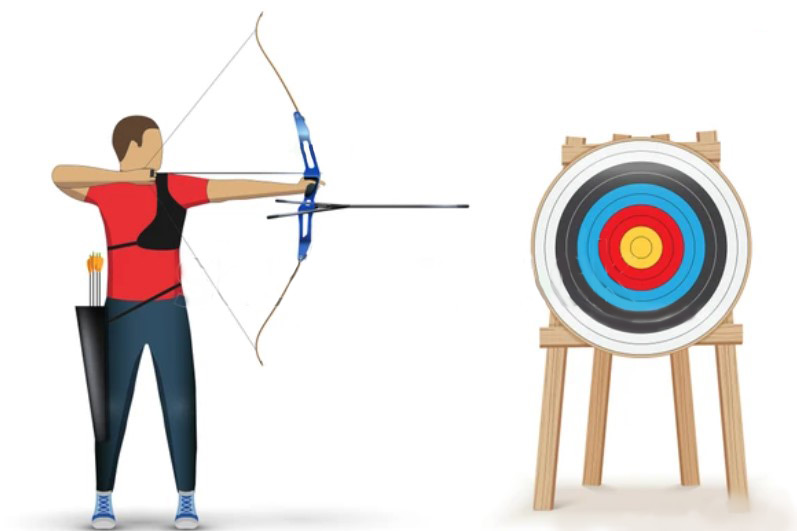

When aiming a recurve bow without a sight, there are a few key things to keep in mind. First, focus on your anchor point—the spot on your face where you consistently draw the string back. This will help ensure consistent alignment and accuracy.
Next, pay attention to your bow hand grip—make sure it’s relaxed and consistent with each shot. Don’t grip too tightly, as this can cause your arrows to go off course.
When it comes to aiming itself, you’ll want to use your dominant eye to align the bow with your target. Make sure you’re standing perpendicular to the target with your feet shoulder-width apart.
Once you’re ready to shoot, take a deep breath and release the string smoothly and steadily.
With practice and patience, you’ll soon become a skilled recurve bow shooter without a sight.
Benefits of Shooting Without a Sight
Learning to shoot a simple recurve bow without a sight can be a great way to improve your overall archery skills.
Even though aiming with a sight is easier, shooting without one can help you build muscle memory and accuracy, get a better feel for the bow, and learn more about how shooting works.
Without a sight, the archer has to focus and concentrate on their shots. They also have to learn how to read their surroundings and make changes quickly.
This will help the archer become more consistent in their shot execution as well as learn to read and trust the bow.
Choosing a Reference Point
The key to success is to select a reference point that is easy to spot and remember. This could be a tree branch, a leaf, or a blade of grass.
It is important to make sure that the reference point is on the same plane as the target so that you can easily line up the bow to shoot.
If possible, it can be helpful to place a marker at the reference point so that you can keep an eye on it as you draw the bow.
This will help you remember where to aim. When shooting, it is important to aim for the reference point rather than the target itself, as you will have a better chance of hitting the target from this angle.
With practice, you will soon be shooting accurately with your recurve bow without a sight.
How to Adjust for Distance Without Sight
It can be hard to aim a recurve bow without a sight, but if you know how to do it, you can always hit the target. Before you begin, you must identify the target and the distance to it.
When aiming at a target further away, it is important to aim slightly above the target to account for the arrow’s arc.
Some Tips for Shooting a Recurve Bow Without a Sight


Shooting a recurve bow without a sight can be challenging, but with some practice and a few tips, you can improve your accuracy and overall performance.
Here are some tips to help you shoot a recurve bow without a sight:
Proper stance and posture:
Start by standing with your feet shoulder-width apart and your body perpendicular to the target. Keep your back straight and your shoulders relaxed.
The bow should be held in your non-dominant hand while your dominant hand holds the string.
Eye alignment:
When shooting a recurve bow without a sight, it’s important to align your dominant eye with the arrow. This will help you aim more accurately.
To find which eye is dominant, extend both arms and create a small triangle with your hands.
Focus on an object in the distance, and then slowly bring your hands back to your face. The eye that lines up with the object is your dominant eye.
Grip pressure:
Grip the bow handle firmly but not too tightly. Too much pressure can cause the bow to twist and affect your aim. Experiment with different grip pressures to find the one that works best for you.
Anchor point:
Develop a consistent anchor point where you rest your string hand on your face. This anchor point should be consistent and repeatable for each shot.
Follow-through:
After releasing the arrow, maintain your bow arm position for a few seconds. This will prevent the bow from moving too much and affecting your aim.
Practice 7: Distance estimation:
Without a sight, it can be difficult to estimate the distance between you and the target. To improve your accuracy, try practicing at different distances and paying attention to how far the arrow travels before hitting the target. This will help you develop a better sense of distance and improve your aim.
Release aid:
Consider using a release aid to help you release the string consistently. This can improve your accuracy and prevent errors caused by inconsistent releases.
Use the arrow tip:
When aiming without a sight, use the arrow tip to align with your target. This can help you aim more accurately and improve your overall performance.
Mental focus:
Shooting a recurve bow without a sight requires mental focus and concentration. Pay attention to your breathing, stay relaxed, and visualize your shot before taking it. This will help you maintain focus and improve your performance.
Which Types of Archery are Recommended?
There are a number of advantages to using a recurve bow that make it the preferred kind of bow.


Traditional archery
Traditional archery is a skill that has been used for hundreds of years and is thought to be one of the oldest ways to shoot an arrow.
It is a style of archery that does not involve the use of any type of sight and is often used for hunting or target shooting.
Traditional archery is best for experienced archers who know how to shoot and have a good grasp of proper form.
Field archery
Field archery is a sport that is played outdoors and involves shooting at targets placed at varying distances.
It is a popular form of competitive shooting and requires a great deal of accuracy and precision.
It is important to practice shooting at different distances, as this will help improve accuracy and consistency.
3D archery
3D archery is another type of competitive shooting that involves shooting at lifelike targets that are placed in natural settings.
The targets are put in different places, so the archer has to change how they shoot depending on where they are.
It is a very challenging form of competitive shooting that requires a great deal of skill and accuracy.
Aiming a Recurve Bow Without a Sight
If you don’t have a sight on your recurve bow, you have to use your gut and common sense to figure out the right distance and direction for the shot.
You should align the arrow with the target and make sure that your body is relaxed and steady.
Then, you should take a few deep breaths and focus on the target, ensuring that your aim is true.
You should release the arrow smoothly and follow through on the shot. With practice, you will develop an instinct for aiming correctly and accurately.
Bowhunting is an incredibly rewarding and challenging sport that requires a great deal of skill and experience.
Techniques For Adjusting Aim for Wind and Other Factors
When you are shooting a recurve bow without a sight, there are several things you need to consider to help you aim accurately.
First, make sure you know the direction and speed of the wind. Wind can be a major factor in aiming, so this information can help you adjust your aiming point accordingly.
Secondly, use the knots on the bowstring as a guide for your aiming point. The knot closest to the arrow nock will act as your aiming point.
Next, it is important to adjust your stance. If the wind is blowing from the left, you may want to stand slightly to the right to help your arrow fly straight.
If the wind is blowing from the side, aim slightly above or below the target to compensate for the wind.
Finally, the best way to adjust for wind and other factors is to practice your aim. Spend time shooting and learning how to adjust for wind in your backyard or at a local shooting range.
Practicing Without a Sight
The first step is to get familiar with the form of your bow. Understand the position of your bow hand, bow arm, and bow shoulder. Then, establish an anchor point, which is where your hand naturally rests on your face when you draw the bow.
Next, find your aiming point by focusing on the target and finding a spot on the target that you want to hit. Once you’ve found the spot, use your body to aim by moving yourself so that the arrow is in the middle of the target.
Keep your muscles relaxed while aiming and shooting, and then release the arrow smoothly when you feel ready.
Follow through by maintaining your form after releasing the arrow. Finally, the most important step is to practice.
The more you practice, the better you will get. With enough practice, you can become a proficient archer with a recurve bow without a sight.
Common Mistakes to Avoid During Practice
Properly aiming a recurve bow without a sight is an important skill to master for any archer. Without a sight, you must rely on your own judgment and skill to hit your target. Here are some tips to help you properly aim a recurve bow without a sight.
The first step to proper aiming is to make sure you have the correct stance. Your feet should be shoulder-width apart, your back should be straight, and you should be facing the target. If you do not have the proper stance, it can be difficult to shoot accurately.
When you are ready to draw the bow, make sure that your hands are in the correct position. Your grip should be comfortable, and your index fingers should be placed above the arrow.
If your hands are not in the correct position, it can cause the bow to not fire correctly and the arrow to fly off in the wrong direction.
Your arms should be straight and level at all times when aiming and drawing the bow. If your arms are not in the correct form, it can cause your aim to be off and your arrow to miss its target.
It is also important to take your time when aiming. Taking too much time can cause you to tense up, but rushing your shot can lead to inconsistency.
It is important to take a few deep breaths, focus on the target, and take your time when aiming.
It is also important to keep your elbow locked and your arm steady. Moving your bow arm can cause the arrow to fly off target.
Additionally, it is important to keep your chin down and your head still when aiming, as any movement can affect the accuracy of the shot.
Lastly, it is important to remember that aiming is not just about physical technique but also requires mental focus and concentration.
Taking the time to practice and focus on your mental state can have a big impact on your shooting accuracy.
Conclusion
Aiming a recurve bow without sights is difficult, but not impossible if you have enough experience and patience. Always keep your anchor point in mind, release any tension in your bow hand, and keep your dominant eye on the target.
You should also try different distances and aiming methods to find out which combination is most effective for you and your bow.
These guidelines can help you shoot more accurately and consistently, whether you’re a bowhunter, an archer, or just a recreational shooter.
If you take your time and put in the effort, you can learn to shoot a recurve bow accurately even without sights. Get out there, calm your nerves, and shoot that arrow. Have fun and shoot safely!
Frequently Asked Questions:
What’s the benefit of aiming a recurve bow without a sight?
Aiming without a sight can improve your instinctive shooting skills and help you connect more closely with the bow and arrow.
Is it difficult to aim a recurve bow without a sight?
It can be challenging at first, but with practice, you can become quite accurate.
Can I use the same aiming technique for all types of bows?
No, different types of bows may require different aiming techniques and adjustments.
Do I need to use a release aid when shooting a recurve bow without a sight?
It’s not necessary, but using a release aid can improve your consistency and accuracy.
What’s the basic technique for aiming without a sight?
The basic technique involves focusing on the target while aligning the tip of the arrow with your intended point of impact.
Do I need any special equipment for aiming without a sight?
While you don’t need specialized equipment, a consistent anchor point and well-tuned equipment are essential.
How do I find my anchor point for aiming?
Your anchor point is where your hand touches your face while drawing the bowstring. It’s crucial for consistent aiming.
What’s the role of bow tuning in aiming without a sight?
Proper bow tuning ensures that your arrows fly consistently, which is vital for accurate aiming.
Are there any aiming techniques or tips to improve accuracy?
Yes, there are various techniques like gap shooting, string walking, and point of impact adjustment that can enhance your accuracy.
Can I use instinctive shooting with other types of bows?
Yes, instinctive shooting techniques can be applied to other traditional bows like longbows and self-bows.
How long does it take to become proficient at aiming without a sight?
The time it takes varies from person to person, but consistent practice is key to improvement.
Are there any common mistakes to avoid when aiming without a sight?
Yes, common mistakes include inconsistent anchor points, poor form, and not focusing on the target.
Is it possible to switch from aiming with a sight to aiming without one?
Yes, it’s possible, but it may require a period of adjustment and practice to adapt to instinctive aiming.
Is instinctive shooting suitable for hunting as well as target shooting?
Yes, instinctive shooting can be effective for both hunting and target shooting once you’ve mastered the technique.
